Meerkat
- February 9, 2024
- 0 comment
Meerkats, those charming little creatures found primarily in the southern regions of Africa, have captured the fascination of people around the globe with their endearing appearance and intriguing behaviors. Resembling miniature mongooses, these small mammals typically measure about 12 to 14 inches in length, with a distinctive dark band across their eyes that acts as built-in sunglasses against the harsh African sun. Living in tight-knit family groups known as mobs or gangs, meerkats exhibit complex social structures where every member plays a vital role. Within these groups, which can consist of up to 30 individuals, there’s a clear hierarchy led by dominant alpha pairs.
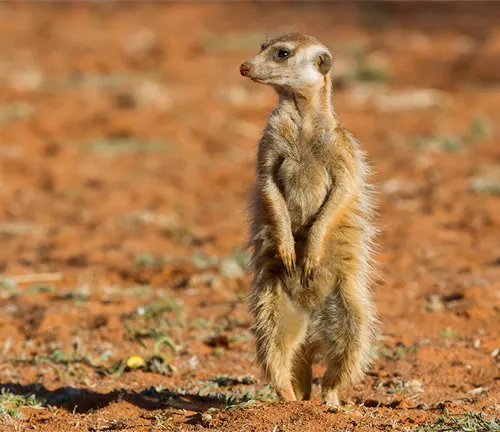
These captivating critters communicate with each other through a variety of vocalizations and intricate body language, helping them coordinate activities and warn of potential dangers. Meerkats are omnivores, feasting on insects, small rodents, fruits, and more, and they employ cooperative hunting strategies to secure their meals. Despite their diminutive size, they face threats from predators such as birds of prey and larger carnivores, relying on their collective vigilance and alarm calls to stay safe. With their unique adaptations, charming antics, and vital role in their ecosystems, meerkats continue to enchant and delight both scientists and nature enthusiasts alike.
| Aspect | Details |
|---|---|
| Scientific Name | Suricata suricatta |
| Size | 12 to 14 inches in length |
| Weight | 2 to 3 pounds |
| Lifespan | 12 to 14 years in the wild, up to 20 years in captivity |
| Habitat | Deserts and grasslands of southern Africa |
| Social Structure | Live in family groups called mobs or gangs, consisting of up to 30 individuals |
| Diet | Omnivorous, feeding on insects, small rodents, reptiles, fruits, and plants |
| Communication | Use vocalizations such as chirps, barks, and growls, as well as intricate body language |
| Predators | Birds of prey, snakes, jackals, and other larger carnivores |
| Reproduction | Breed during the rainy season, with females giving birth to litters of 2 to 5 pups |
| Conservation Status | Currently listed as a species of least concern on the IUCN Red List, but face threats from habitat loss and human encroachment |
| Notable Features | Dark patches around eyes act as natural sunglasses, cooperative hunting and babysitting behavior |

Meerkats, small carnivores belonging to the mongoose family, are renowned for their fascinating behavior and striking appearance. These captivating creatures, native to the deserts and grasslands of southern Africa, have garnered attention worldwide for their complex social structures, unique adaptations, and charming antics.
Physical Characteristics
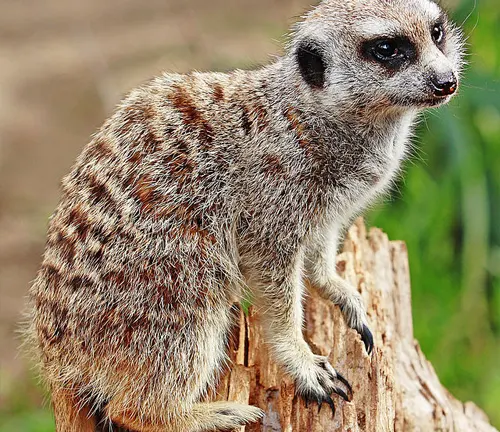
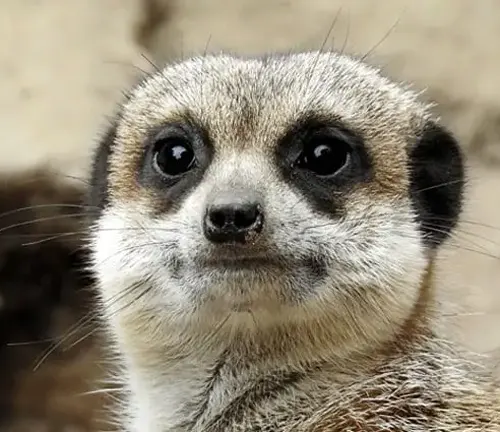
Meerkats typically measure around 12 to 14 inches in length, with a tail of approximately 7 to 10 inches. They possess a slender body, pointed face, and small, rounded ears. Their fur is light brown to gray in color, with distinct bands across their backs. One of the most notable physical features of meerkats is their dark patches around their eyes, which act like natural sunglasses, reducing glare from the sun as they forage for food.
Social Structure
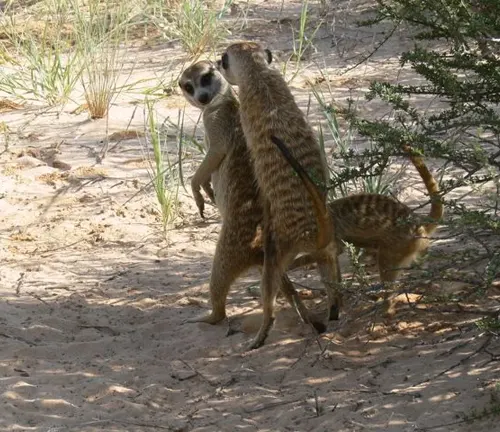
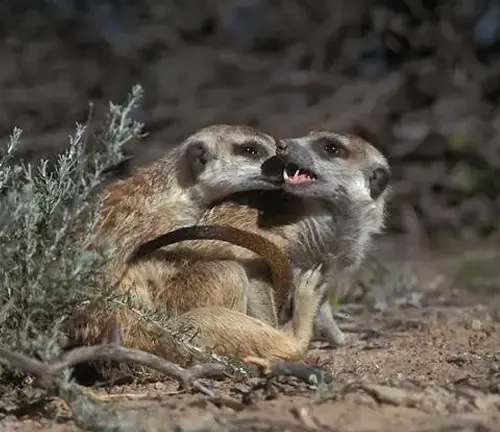
Meerkats live in tight-knit family groups known as mobs or gangs, which can consist of up to 30 individuals. Within these groups, there is a well-defined social hierarchy, with dominant alpha pairs leading the pack. Other members of the group serve various roles, including sentries, babysitters, and hunters, contributing to the collective survival of the community.
Communication
Communication is essential for meerkats to coordinate their activities and warn each other of potential dangers. They produce a wide range of vocalizations, including chirps, barks, and growls, to convey different messages. Additionally, they use intricate body language, such as tail signals and postures, to communicate with each other effectively.
Diet and Hunting
Meerkats are omnivorous, feeding on a diverse diet that includes insects, small rodents, reptiles, and fruits. They are highly skilled hunters, employing a cooperative strategy to catch prey. Meerkats work together to flush out prey from hiding spots, using their sharp claws and teeth to capture their target.

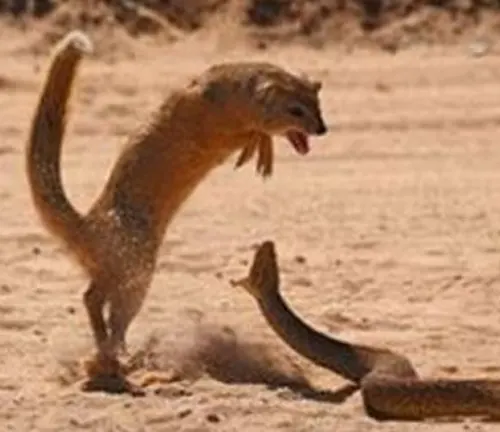
Predators
Despite their agility and keen senses, meerkats face threats from various predators, including birds of prey, snakes, and larger carnivores like jackals and eagles. To defend against these threats, meerkats rely on their cooperative behavior, with individuals standing guard while others forage for food. They also have a system of alarm calls to alert the group to potential dangers.
Reproduction
Meerkats are sexually dimorphic, with males typically larger and more dominant than females. Breeding usually occurs during the rainy season, with females giving birth to litters of 2 to 5 pups after a gestation period of about 11 weeks. Both parents, as well as other members of the group, participate in caring for and protecting the young.
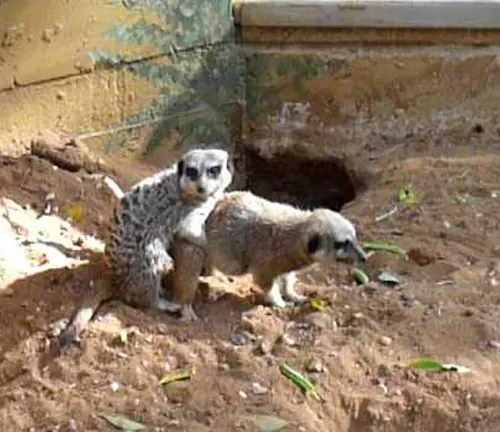
Life Cycle
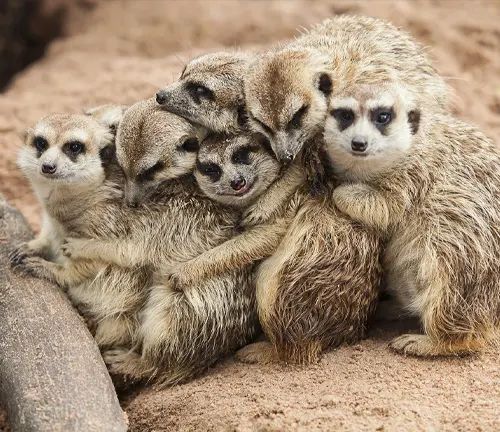
Meerkat pups are born blind and helpless, relying entirely on their parents and other group members for survival. As they grow, they gradually become more independent, learning essential skills such as foraging and sentry duty from their elders. Meerkats reach sexual maturity at around one year of age and may stay with their natal group or disperse to join other mobs.
Conservation Status
While meerkats are not currently considered endangered, they face threats from habitat loss, human encroachment, and climate change. Conservation efforts, including habitat protection and education initiatives, are underway to ensure the long-term survival of these charismatic creatures.
Cultural Significance
Meerkats hold a special place in the cultural heritage of the regions where they are found. They are often depicted in African folklore as symbols of unity, cooperation, and family values. In modern popular culture, meerkats have become iconic figures, featured in movies, television shows, and advertising campaigns around the world.

Interaction with Humans
Human interaction with meerkats, particularly through ecotourism, has both positive and negative impacts. While tourism can provide economic benefits to local communities and raise awareness about conservation issues, it also carries risks such as habitat disturbance and disease transmission. Responsible tourism practices are essential to minimize these risks and ensure the well-being of meerkat populations.
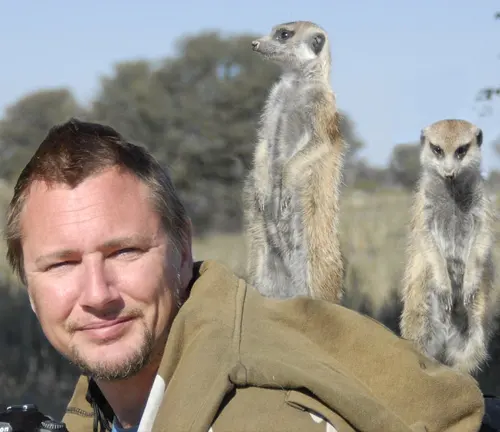
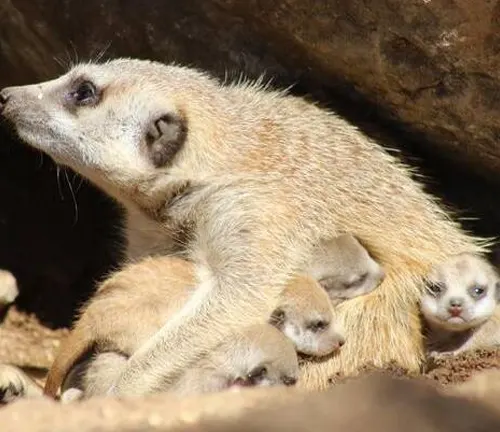
Interesting Facts
- Meerkats have a unique behavior called “babysitting,” where individuals take turns watching over the young while the rest of the group forages for food.
- They have a specialized adaptation that allows them to close their ears to keep out sand while digging.
- Meerkats are highly territorial and will defend their territory against intruding groups with vocal displays and physical confrontations.
Challenges and Adaptations
Surviving in the harsh desert environment presents numerous challenges for meerkats, including extreme temperatures, scarce food resources, and predation. Over time, they have evolved a range of adaptations, such as their social structure, keen senses, and efficient foraging techniques, to thrive in these challenging conditions.
Different Species
Yellow mongoose (Cynictis penicillata)
Found in southern Africa, these mongoose species are similar in size to meerkats and share some overlapping habitats.
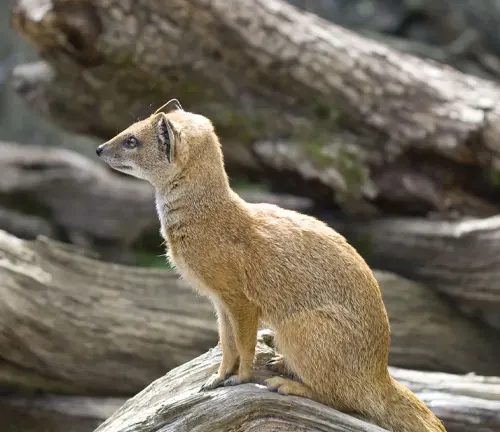
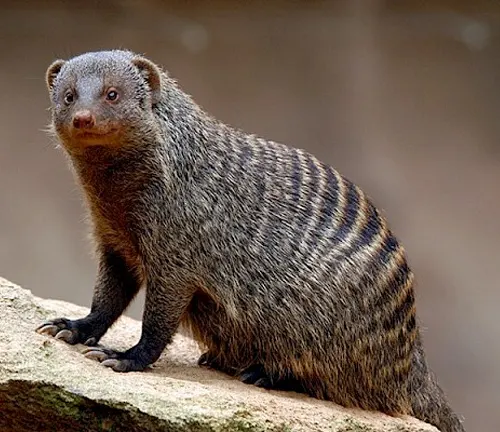
Banded mongoose (Mungos mungo)
Native to central and eastern Africa, banded mongooses live in social groups similar to meerkats, though they exhibit different behaviors and habitats.
Dwarf mongoose (Helogale parvula)
Also found in Africa, dwarf mongooses are the smallest members of the mongoose family and live in tight-knit social groups similar to meerkats.
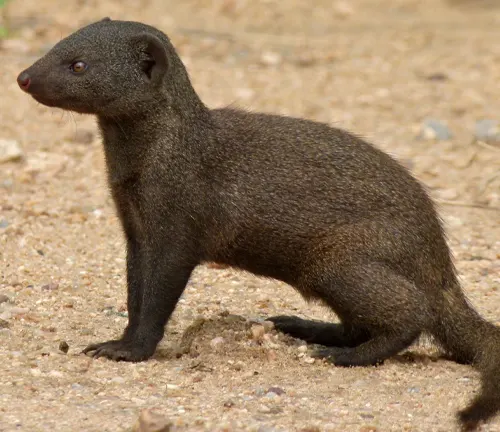

Slender mongoose (Galerella sanguinea)
Widely distributed across Africa, slender mongooses are solitary hunters, differing from the more social behavior of meerkats.
Frequently Asked Question (FAQs)
- What is a meerkat?
A meerkat is a small mammal belonging to the mongoose family. Known for their social behavior and upright posture, meerkats are native to the deserts and grasslands of southern Africa. - Where do meerkats live?
Meerkats primarily inhabit arid regions of southern Africa, including countries such as Botswana, Namibia, South Africa, and Angola. They prefer open areas with sandy soils, where they can dig extensive burrow systems for shelter. - How long do meerkats live in the wild?
In the wild, meerkats typically live for about 10 to 12 years, although some individuals may survive for up to 14 years under favorable conditions. - What do meerkats eat?
Meerkats are omnivorous, feeding on a varied diet that includes insects, small rodents, lizards, birds, eggs, fruits, and roots. They are skilled hunters and foragers, capable of capturing both terrestrial and aerial prey. - How do meerkats hunt?
Meerkats hunt cooperatively, working together in groups to locate and capture prey. They employ a combination of stalking, digging, and flushing techniques to catch insects and small animals, often taking turns as sentries to watch for predators while others search for food. - Are meerkats endangered?
Meerkats are currently listed as a species of least concern on the IUCN Red List. While they face threats from habitat loss, human encroachment, and predation, their populations remain stable across their range. - Do meerkats make good pets?
Meerkats are wild animals and are not suitable as pets. They have complex social structures and specialized care requirements that make them unsuitable for domestication. - How do meerkats communicate with each other?
Meerkats communicate through a combination of vocalizations, body language, and scent markings. They produce a range of sounds, including chirps, barks, and growls, to convey messages such as alarm calls, mating calls, and territorial warnings. - How do meerkats protect themselves from predators?
Meerkats employ various strategies to protect themselves from predators, including standing guard, retreating into burrows, and mobbing potential threats. They also have specialized alarm calls to alert the group to the presence of predators. - What is the average size of a meerkat group?
The average size of a meerkat group, known as a mob or gang, typically ranges from 5 to 30 individuals, although larger groups have been observed in areas with abundant food resources. - Do meerkats hibernate?
No, meerkats do not hibernate. They are active year-round, foraging for food and maintaining their burrow systems regardless of the season. - What role do meerkats play in their ecosystem?
Meerkats play a crucial role in their ecosystem as predators of insects and small animals, helping to regulate population numbers and maintain ecological balance. Their burrow systems also provide shelter for other species and contribute to soil aeration. - How do meerkats reproduce?
Meerkats reproduce sexually, with breeding typically occurring during the rainy season. Females give birth to litters of 2 to 5 pups after a gestation period of around 11 weeks. Both parents and other group members participate in caring for and protecting the young. - Are meerkats territorial?
Yes, meerkats are territorial animals, defending their territory against intruding groups through vocal displays, physical confrontations, and scent markings. Territorial boundaries are often marked with urine and feces. - Can meerkats swim?
While meerkats are capable of swimming, they typically avoid water and are not as proficient swimmers as some other mammals. They prefer to stay on dry land and rely on their agility and speed to evade predators and navigate their habitat.


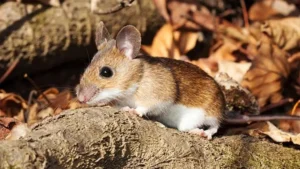
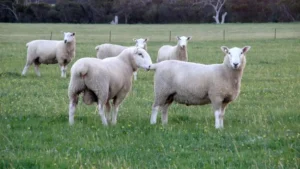

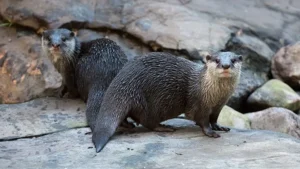



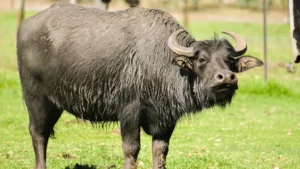


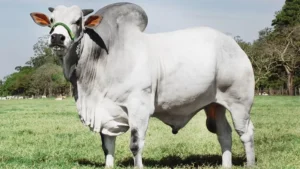
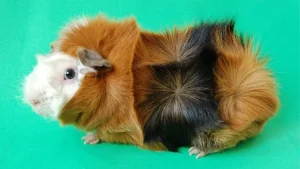
Leave your comment